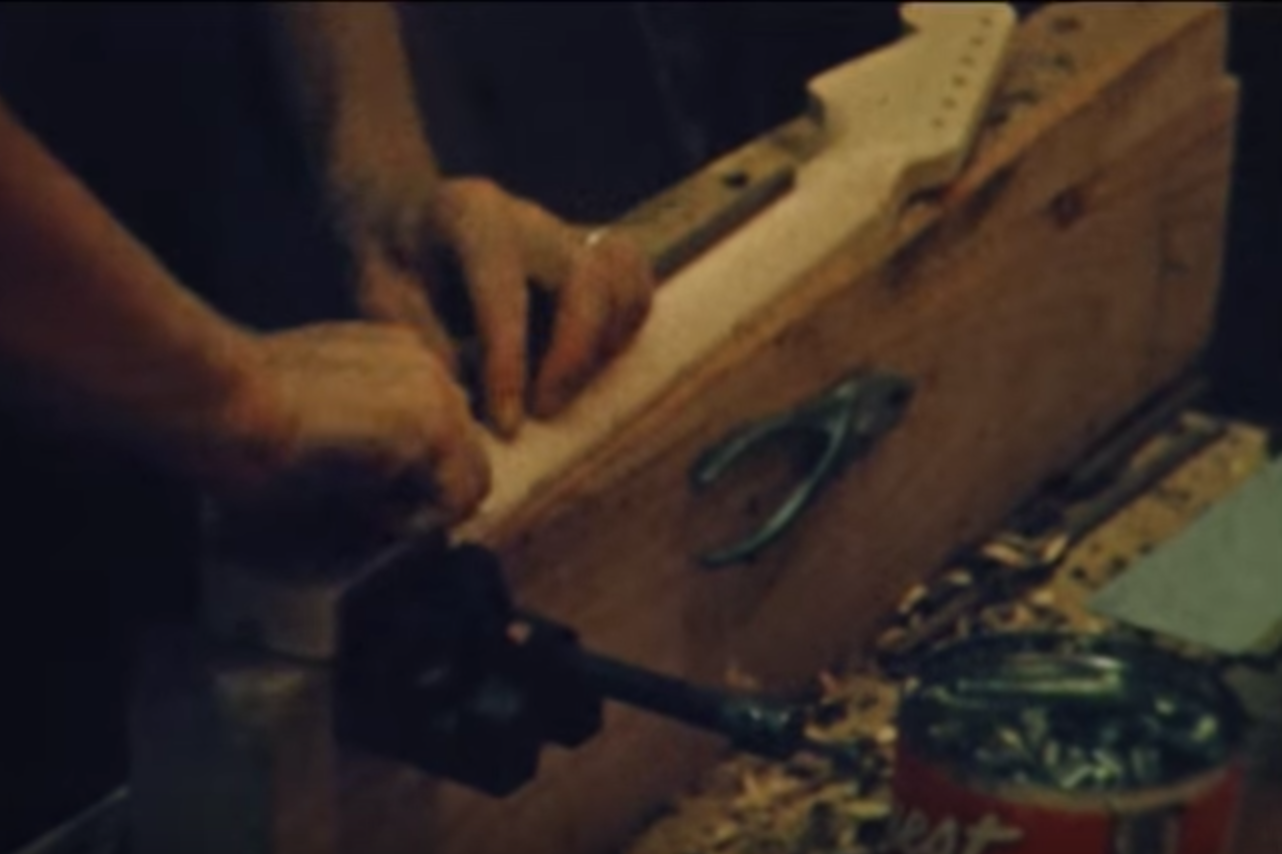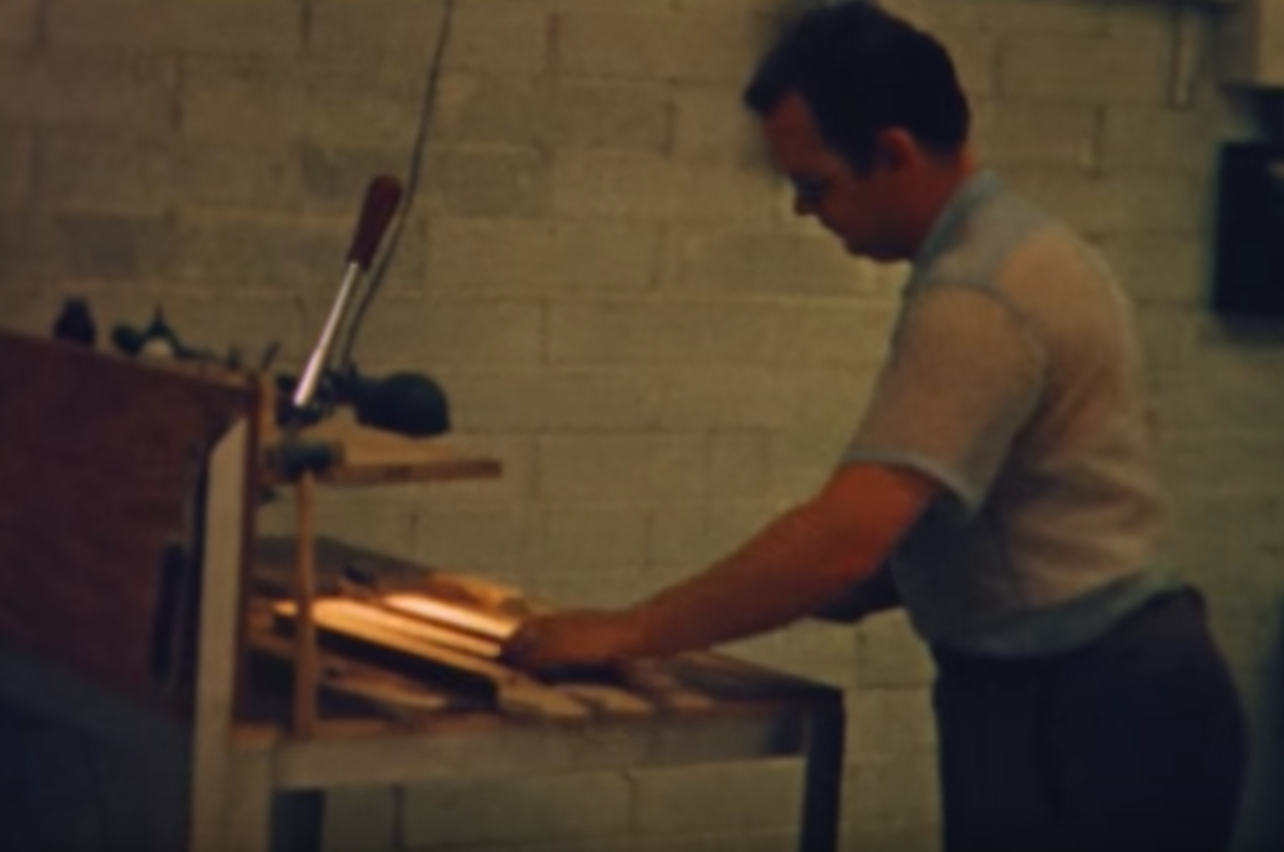In what seems like a bygone era, factory hands are seen sanding, fretting and staining what would later become the world’s most highly sought after electric guitars ever made. While the restored 8mm footage has been making the rounds for a while, it’s only recently come to light that it in fact may be the only footage left of the 1950’s factory.

Where would we be without Fender? Here’s the only existing footage of what their factory floor looked like in 1959.
This was a time when the now ubiquitous guitar giant was a modest enterprise, only employing around 100 people. And even that was major growth from the less than 15 people it employed in 1947. That’s part of what is so inexplicably satisfying about watching this footage. That, and just how much those roughly 100 craftspeople were doing by hand.
These were the days before CNC machines replaced most of the handiwork that went into these kind of projects. Fred Fullerton is seen transforming an unrefined plank of wood into a perfect Stratocaster guitar body and carefully trimming headstocks, all majorly by hand.
Men and women are seen sanding necks, adding frets, and staining and finishing guitar bodies. Leo Fender is even present in the second shot. Later on in the video, Abigail Ybarra is spotted winding pickups, which she continued to do for Fender’s Custom Shop up until 2013.

Seeing so much of this work being done in the absence of machines is surreal only in the context of how massive Fender has become. Plenty of smaller boutique builders continue to build instruments almost, if not entirely, by hand.
What is particularly charming about this video, though, is observing such everyday folks making the guitars that have come to occupy such a mythic, almost divine station today. 1950s-era Fenders command some of the most staggering resale values in the whole of the guitar world.

According to CinePost, the uploader of the video, the film was shot by Forrest White. White worked at Fender from 1954 to 1966 as a production manager and eventually as the Vice President of the company. If you were particularly captivated by his footage, you can pick up his book, Fender: The Inside Story, to learn more about his time with the company and his long relationship with Leo Fender. Article first appeared on Reverb.com.



